
A landscape with the future creatures. The cyborgs and the nature synthesize it.
When does the landscape become a machine?
Abstract
The fictional short narrative that follows develops in a construction site of Nile’s dam.
It aims to analyze the relationship between host and guests, in an assumption where
the Nile is the changing landscape that welcomes each species.
The plot consists of three acts, the first act is in the present and takes place
in the excavation of the dam. In the second act, a finding from the past reminds
us of the importance of the Nile, the Cyborg deities, and the parasitic relationship
of human to nature. In the third act, the heroes envision
an imaginary Nile of the future.
The characters are the two workers (Mu and Ahmed), an architect (Youssef),
an (Enviromental Activist) Salma, an Archeologist (Nenet),
Geologist (Shyam) and the CEO (Hussain).
Act I
Construction site of dam.
Observing the panoramic delta of the river Nile in close proximity to the city Assuan – the sound of heavy machines is coming towards the ground. The Vibration of jackhammers raises the dust in waves from the ground. In all this hustle there is a group of people, their faces drawn by the exposure of the burning sun and the hot dry air gathered together in a shaded place to escape the ruthless landscape.
Mu: We have been digging since morning, how much further do we have to dig? I don’t feel my hands anymore. How are you feeling, Ahmed?
Ahmed: Very tired! But no wonder “you’re sort of like a robot, but in human form… It’s human automation, if you like.” (1)
Mu: But aren’t you curious about what we are building? What’s the purpose?
Ahmed: Well we are building a Dam! And I think “Over the last 150 years, the industrial spaces of capitalist production have been the location for advancements[…].” (2)
Mu: So you mean this dam “[…]is one of a million autonomous machines that now populate our landscapes , buildings, and cities.” (3)
Ahmed:Yes…. so?
Mu: But don’t you think if such “huge facilities are appearing across such beautiful landscapes, unimaginably massive” (4) would destroy it?
Sighing.
Ahmed: Ahhh…. Nature is a topic of public discourse on which much turns, even the earth. (5)
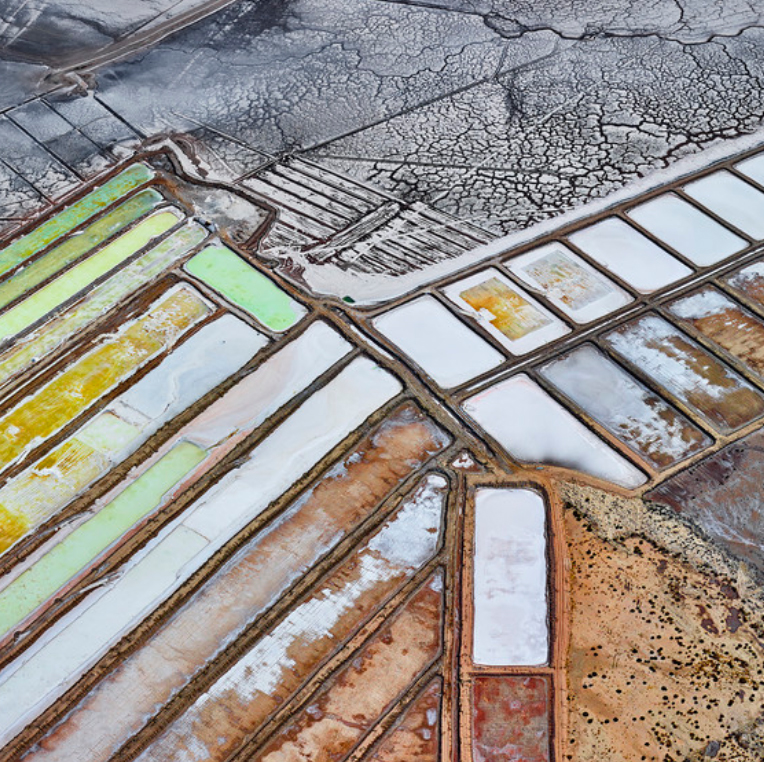
A series of salt pans and dry lake beds investigates the hybridized result of human-made structures and organic forces.
Enter the Architect, wondering why the workers are not working
Youssef: What’s going on here? Why has the work stopped?
Ahmed: Sorry Boss!…. But Mu thinks that “this is not a very lively world, and it does not finally offer much […].” (6)
Mu: It’s just that we humans do not care much about nature. For us it’s just a machine landscape that can be changed to our favor.
Youssef:“We already are a manufactured landscape, that’s the truth of it.” (7)
Ahmed: EXACTLY! Machine landscapes are located wherever land, energy, and labor can be economically rationalized. (8)
Mu: How much more will they expand? Doesn’t “every living has its own living boundaries and limits.” (9)
Youssef: So do we stop people from coming to the city? Do we stop development?
Mu:But at what cost? The dam not only generates energy but also destroys natural energy on both sides. One side drowns and dies of thirst.
Youssef:[…] we develop new forms of productive engagement with the mechanical, digital and biological species of the […].” (10) human world.
Agreeing.
Ahmed:Yes yes. True.
Taking a deep breath.
Mu: But what about the smaller settlements on either side of the dam? The Investors […] “have for many decades been in conflict with indigenous peoples over resources and ways of life.” (11)
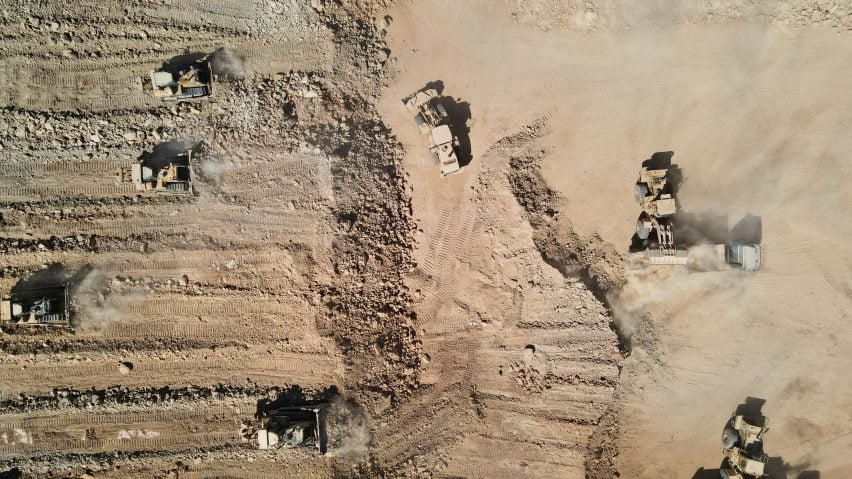
The Line “will revolutionise our current way of life” and be net-zero over its lifetime, but its sustainability and livability claims have been called “naive” by experts.
Enter the Environment Activist (E.A.) group breaking through the barricades
EA Group: “Who speaks for the earth?” (12)
Nile belongs to nature!
“Tutelage will be eternal.”(13)
Ahmed: Not these people again…..They garther “[…] to protest plans for a hydroelectric dam on their territory”. (14)
Enter Salma, head of Environment Activist (E.A.) group
Salma: “The Choice Is the Universe-or Nothing.”(15)
Talking to the protesters.
Youssef: EVERYONE DO NOT CROSS THE BARRICADES! THIS IS
A PRIVATE PROPERTY!
Talking to Salma.
What’s the meaning of this Salma?
Salma:“If only communication can be established, destruction can be averted.” (16) You guys are disturbing the sanctity of the river Nile. You are diminishing its importance and meaning. The Nile is the symbol of fertility and prosperity for our culture and you are choking it.
Talking to the protesters.
EVERYONE KEEP PUSHING!
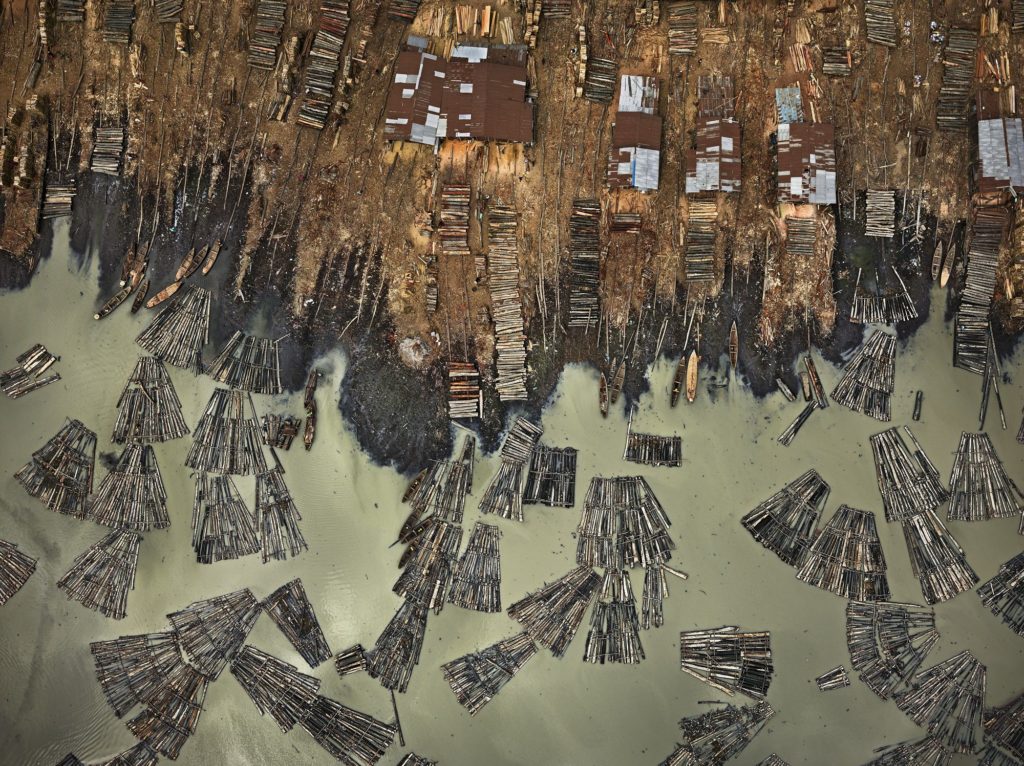
Age of Anthropocene: Art highlights human destruction of Earth. Humanity’s fingerprints are pressed all over the Earth’s surface. A sense of urgency when it comes to reversing the potentially permanent impacts of climate change.
Running towards the Architect.
Ahmed: BOSS! BOSS! BOSS!
Talking to Salma.
Youssef: Wait a minute.This project has been approved by the board. Nothing you do is going to stop it from happening! And what’s all this about Nile being sacred? We are not living in the past anymore! What is your claim?
Salma:“Our goal is to provoke curiosity about the world and the fragile complexity of its natural order; to satisfy that curiosity through observation and learning […]” (17). As per the egyptian, river nile is the goddess of life. It is the host for all the life that it holds in its laps. Destruction of nile is the end of time for the oldest civilization on earth and its belief in nature.
Continuing the argument.
Other EA: “To create an understanding of man’s place in the ecological structure, and his responsibility to it […].” (18)
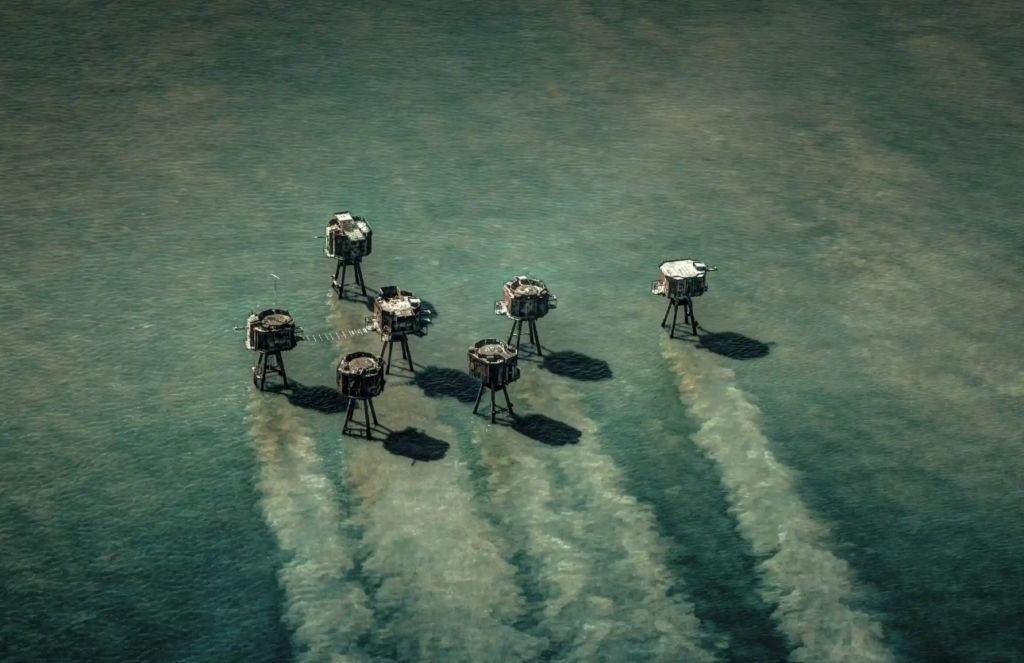
These fort structures were built which consisted of a searchlight tower and then 5 interconnected gun platforms.
Running towards the Architect.
MU: BOSS! …
Annoyed.
Youssef: Just what is it? Can’t you see I’m busy!
Stunned by the new finding at the site.
MU: EVERYONE!
Come here quickly!
Look what I discovered!
It appears that our ancestors left this as a reminder for us!
Youssef: What happened? What is it? What do you mean?
Ahmed: This looks like an old tunnel …
Everyone gathered together around the opening of the tunnel and started to walk in.
End of Act I
Act II
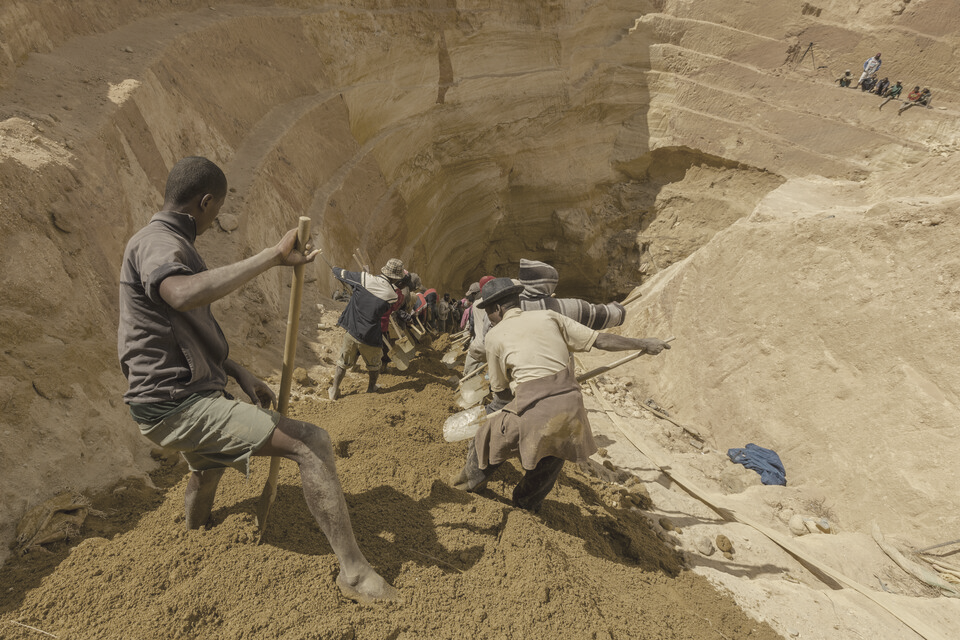
The choreography of the human bodies, The human conveyor belts of llakaka shovel dirt in the perfect synchronization, their bodies repurposed as digging machines.
Discovery of the ancient painting inside the tomb.
It has been several weeks since the discovery of the tunnel. Through careful planning and excavation, the tunnel has been made void of the debris. The tunnel has led the excavation team to a tomb. The team consisting of an Archeologist (Nenet), an Architect (Youssef), an Environmentalist (Salma), and two workers (Mu and Ahmed) who are working in the tomb to uncover its origin.
Mu: Hey, Ahmed. What do you think this is?
Slowly removing the dust and mud from the central interior wall of the tomb.
Ahmed: I’m not sure. Wait.
Taking a few steps back to get a clear picture.
I think it’s an ancient wall painting. Look to your left! Hieroglyphics!
Salma: It appears that our ancestors left this as a reminder for us.
Stunned by the finding.

The current landscape of the Nile with crops and hydroponics. A hospitable place for every species.
Enter the Archeologist (Nenet), seeing the wall from a far.
Nenet: Magnificent! This painting was created around 3500 BC. Look at this part. We can see the relationship between the farmers and the Nile.
Salma: Indeed ancient agriculture is exemplary of how “the true gift of hospitality is an act of generosity experienced by the ‘guest’, which turns a stranger into a friend for a limited period of time.”(19)
Mu: You mean our ancestors were the ‘Guests of the Nile’?
Nenet: Exactly! And also the other way around! “The traditional and religious concept of ‘visitation’ to ‘invitation’: visitation implies the arrival of someone who is not expected, who can show up at any time.” (20)
Mu: So they worshiped nature as if it were a divine entity?
But then, what is the purpose of these half-human and half-animal figures?
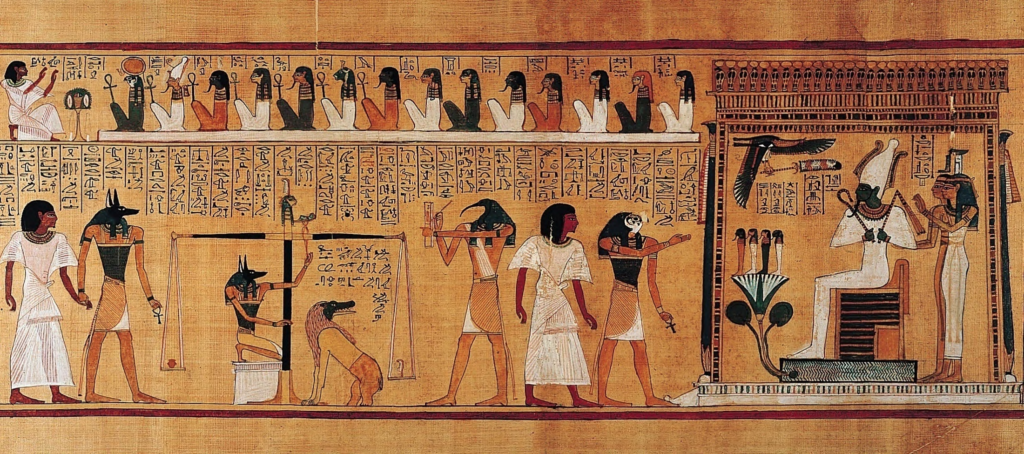
Centrally placed is a balance, holding in its two pans Ani’s heart (on the left) and a feather (on the right) representing Maat, the divine personification of truth and order.
Nenet: This is a depiction of the relationship between humans and nature. “Nature is the place to rebuild public culture.[…]Nature cannot pre-exist its construction. First, it means that nature for us is made[…].” (21)
Youssef: No! No! No!
Arguing vehemently.
“man makes everything, including himself, out of the world that can only be a resource and potency to his project and active agency.” (22) Man even makes up his own gods as you can see clearly!
Mu: But why gods with animal heads? They look like cyborgs!
Ahmed:“[…] this designates a kind of relationship, an achievement among many actors, not all of them human, not all of them organic, not all of them technological. […] it is a co-construction among humans and non-humans.” (23)
Mu: “In that sense they are part of the cyborg World.” (24)
Ahmed: How does the Nile take part in this relationship?
Salma:The Nile was a hosting Machine Landscape! In the opinion of our ancestors this kind of “Machine landscapes are best understood not as building but as geological formations.” (25)
Mu: Then what happened now? I heard the farmers and fishermen complain about the harvest getting worse.
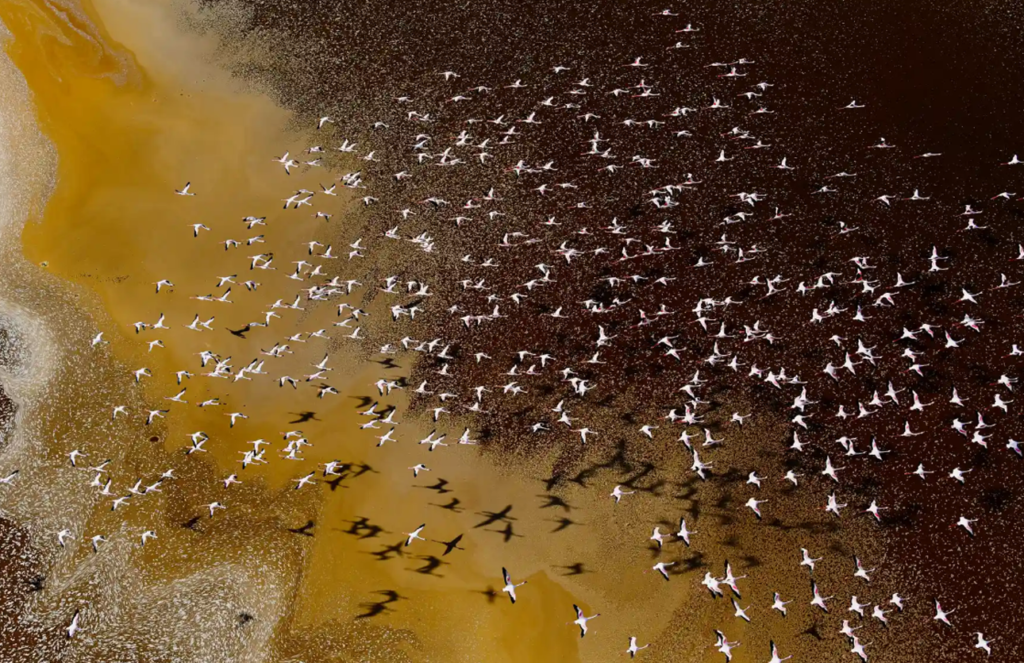
Flamingos feed on algae in this Young Environmental Photographer of the Year-winning photo. The site in Kenya was once a freshwater lake but has turned into saltpans that are toxic to most other forms of animal life
Enter the Geologist (Shyam)
Shyam: It’s that dam!
Climbing into the tomb.
“The toxic landscape has taken over…” (26)
Youssef:What about it?
Sounds like hiding something
Shyam: What about it?… Really!? … It changes everything!
Looking at him with disgust
It cuts off the water sources downstream, causing poor harvest and even shifting the river’s flow! Riversides are altered! How can you be unaware? “The earth itself has become infected.” (27)
Mu: I knew it! I always had a feeling there was something wrong. What is the origin causing this infection of these “parasite” species?
Salma: HUMAN! HUMAN! HUMAN!
Shyam: Yes, human is causing problems for its own convenience becoming the “Parasite”.
Mu: What do you mean when you call one of the most intelligent species on earth a “Parasite” ?
Salma: The “[…] human group is organized with one-way relations, where one eats the other and where the second cannot benefit at all from the first […], this relation without a reversal of direction, “parasitic.”” (28)
Nenet: “For example, what does man give to the cow, to the tree, to the steer, who gives him milk, warmth, shelter, work, and food? What does he give? Death?” (29)
Shyam: The dam is a construction only for humans, which dismantled nature’s machine landscape to create its own. “Hospitality has somehow been replaced by parasitism” (30)
Ahmed: Alright, alright… So we are the species responsible for the destruction of this planet. What is the future of this relationship?
Nenet:From my point of view, there is no right and wrong way.
Mu: In the end, everything will become a machine.
Salma: “The hybridized ecology is a cyborg […].” (31) “[…] we find ourselves to be cyborgs, hybrids, mosaics, chimeras”. (32)
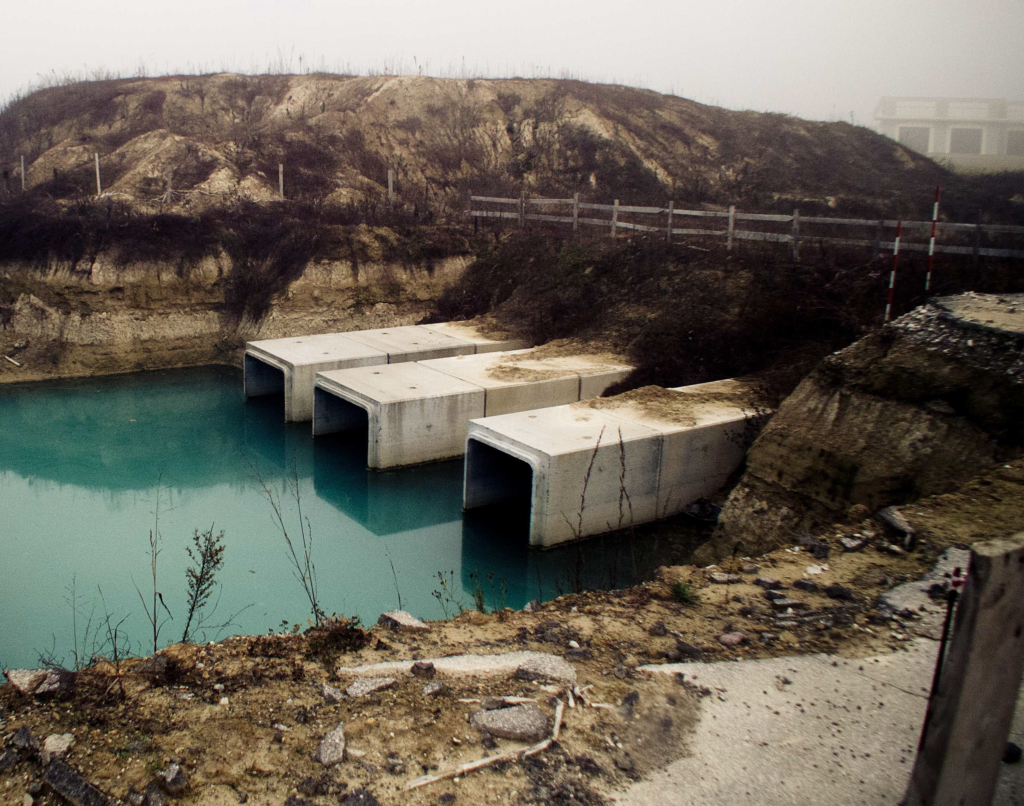
In the transition through an industrial system many of the territorial characters became obsolete or misused; now that nor industrial, nor conventional farming seems to grant a payback how would it be possible for who inhabit the territory to appropriate the development they’re undergoing?
Enter the CEO (Hussain)
Ahmed: LOOOK! A Cyborg is already coming towards us. It’s a sign!
Smirking.
Hussain: What’s taking so long? The tomb needs to be accessed quickly, for the construction of the dam to begin.
Nenet: This is an archaeological site now. We cannot just assess everything quickly the way you corporate guys do it. We need to consider all the parameters during assessment, not just take observations from far and come to a conclusion.
Salma: Typical! Not a shred of patience and respect for the past.
Rolling her eyes in disgust.
Continuing to speak while ignoring Salma’s remark.
Hussain:Pick up the speed! This needs to be done by the end of the day. And why are you all still at the start of the cave? Let’s move further in.
Everyone moves further into the cave.
End of Act II
Act III
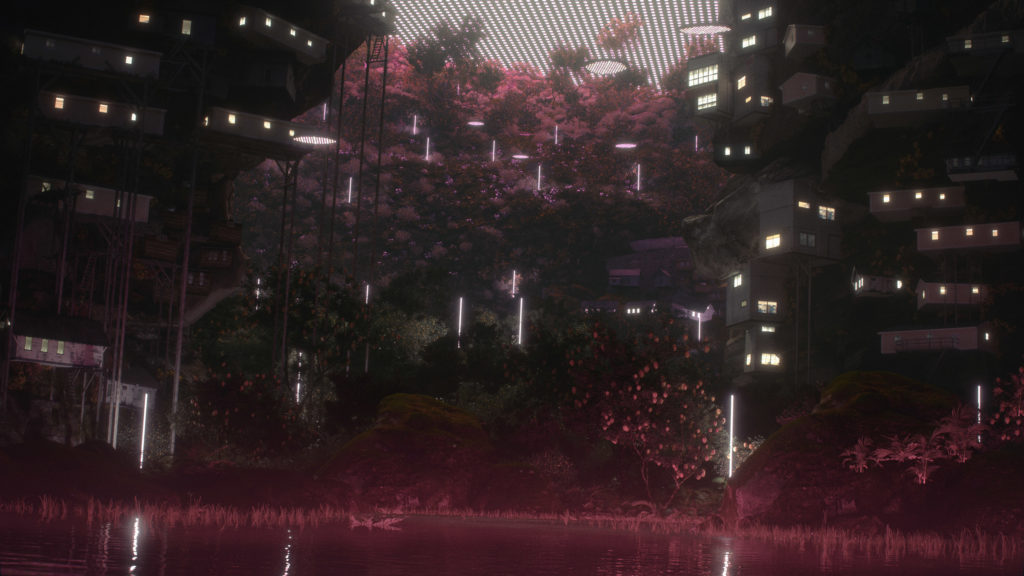
“Planet City is a speculative narrative of what could happen if we were to radically reverse this planetary sprawl.”
As the group moves further into the cave, the dwindling oxygen levels inside the tomb has a hallucinating effect on the members of the little exploration group. Is this the curse of the pharaoh? Who knows. The members start to identify each other as cyborgs, they follow the CEO and their journey starts along the devoured tunnels of the tomb.
Ahmaid: Wait… Why do you look like that? What happened to you? If I see you like this it seems that “The difference between machine and organism is thoroughly blurred”. (33)
Talking to Shyam.
Mu: Ahh… You’re right.
Agreeing with Ahmed.
He adapted his own characteristics, but also of other coexisting beings. Oh wait, it’s all of us! We no “longer” have “the symbolic or material capability of dictating the shape of reality to any of them.” (34)
Ahmaid: Guys, can you see the dam merging with the surrounding landscape? I see all earthly beings developed by some kind of evolutionary force.
Pointing towards the ruble in the cave.
Mu: YESSSS! It seems very harmonious.
Staring at the same spot.
Nenet: “These borderlands suggest a rich topography of combinatorial possibility.” (35) Do you want to say something, Youssef? I am curious about what do you think about building the dam now?
Eyes wide open in awe of the visuals.
Youssef: Is this the way our ancestors live along with nature, by developing “[…] new forms of productive engagement with the mechanical, digital and biological species of the non-human world.” (36)
Salma: Hear all the beautiful voices of all species. “Nature may be speechless, without Language, in the human sense; but nature is highly articulate.” (37) We just need to be open to it and by it…
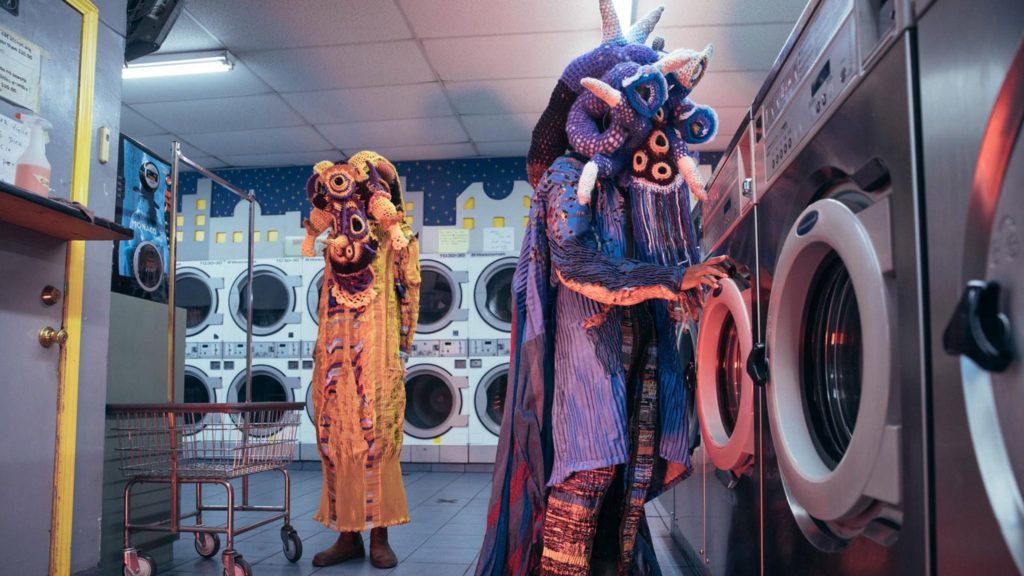
Ane Crabtree designs costumes for bot herders and drone shepherds for Planet City movie.In the movie, Young imagines a future in which the 10 billion inhabitants of the Earth live together in one giant, sustainable, multicultural city.
Confused.
Hussain: What are you talking about? And what are you even seeing?
Shyam: “It seems like a world without exclusion and parasitism, where” […] both the host and the guest accept, in different ways, the uncomfortable and sometimes painful possibility of being changed by the other. (38)
Nenet: But look around the dam, everything is hosting the Nile.
And the streams are hosting everything.
Embracing the change in mindset.
Youssef: We have strayed away from the path of working with nature, and have tried to dominate it instead. Something needs to change. I can see it now with my own eyes.
Realizes they are hallucinating.
Hussain: Come on everyone! Follow me!
Tries to direct everyone towards the entrance of the cave.
Nenet: “As we turn our gaze, towards the machine landscapes, we need to radically embrace our uncomfortable place in a world where we are no longer at its center.” (39)
Hallucinating.
Ahmaid: YES, we all have the same value as coexistings on this earth.
Shyam: Exactly, “In these new landscapes the poetics of human occupation are extraneous, the scale of the body is immaterial[…]”. (40)
Salma: […] “the dichotomies between mind and body, animal and human, organism and machine, public and private, nature and culture, men and women, primitive and civilized are all in place”. (41)
Rushes to start the generator.
Hussain: Regain your consciousness! And get back to work. Stop hallucinating! This new machine landscape is not going to feed you!
End of Act III
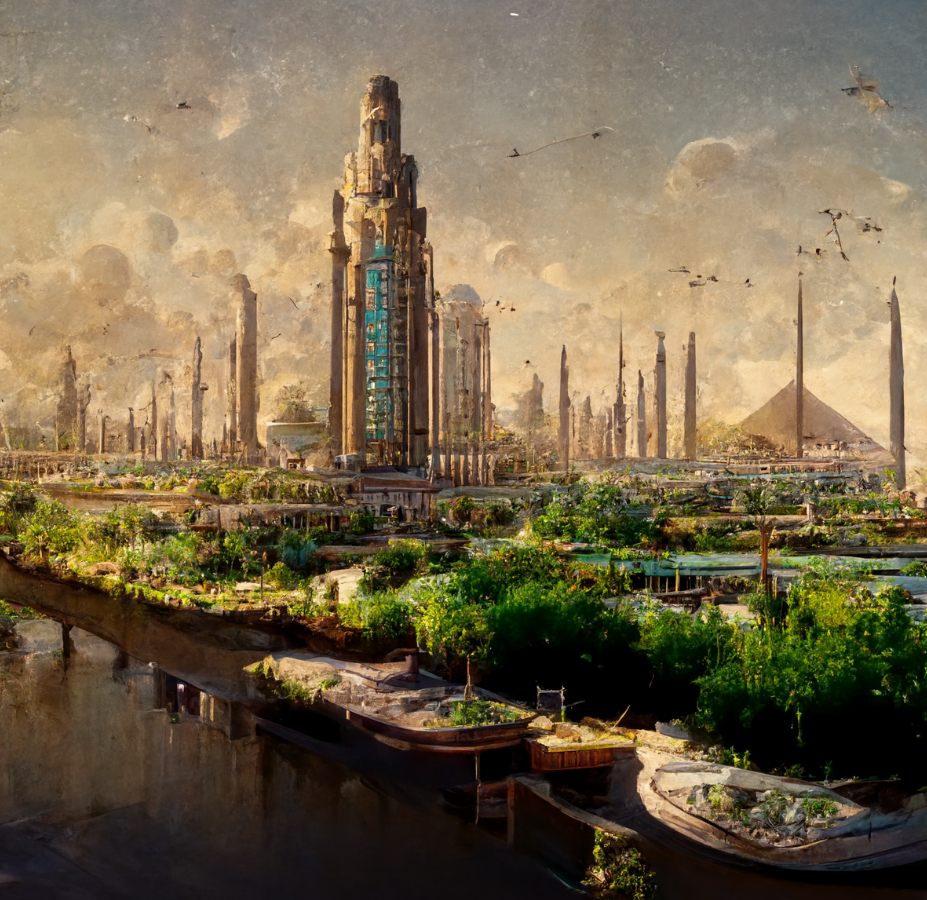
A detailed illustration of the futuristic historic egyptian city.
Everyone breathes fresh air and wakes up.
This is a dream, of how a landscape becomes
a new machine …
It is a beginning of a new evolution, of nature building
through redefinition of machine landscape,
where we thrive to become combinations of each
other and create a cohabit, a coexisting landscape for all.
CURTAIN
References
- Liam Young, “LANSCAPE MACHINES_ARCHITECTURE OF POST ANTHROPOCENE”, 47
- Liam Young, “LANSCAPE MACHINES_ARCHITECTURE OF POST ANTHROPOCENE”, 102
- Cathryn Dwyre, Chris Perry, David Salomon, Kathy Velikov, Peder Anker, Catherine Ingraham, “AMBIGUOUS TERRITORY, ARCHOTECTURE, LANDSCAPE AND THE POST NATURAL”, 56
- Liam Young, “LANSCAPE MACHINES_ARCHITECTURE OF POST ANTHROPOCENE”, 63
- Liam Young, “LANSCAPE MACHINES_ARCHITECTURE OF POST ANTHROPOCENE”, 65
- Donna Jeanne Haraway, “PROMISES OF MONSTERS”, 89
- Liam Young, “LANSCAPE MACHINES_ARCHITECTURE OF POST ANTHROPOCENE”, 135
- Cathryn Dwyre, Chris Perry, David Salomon, Kathy Velikov, Peder Anker, Catherine Ingraham, “AMBIGUOUS TERRITORY, ARCHOTECTURE, LANDSCAPE AND THE POST NATURAL”, 61
- Despret Vinciane,“LIVING AS A BIRD”, 58
- Cathryn Dwyre, Chris Perry, David Salomon, Kathy Velikov, Peder Anker, Catherine Ingraham, “AMBIGUOUS TERRITORY, ARCHOTECTURE, LANDSCAPE AND THE POST NATURAL”, 67
- Cathryn Dwyre, Chris Perry, David Salomon, Kathy Velikov, Peder Anker, Catherine Ingraham, “AMBIGUOUS TERRITORY, ARCHOTECTURE, LANDSCAPE AND THE POST NATURAL”, 85
- Donna Jeanne Haraway, “PROMISES OF MONSTERS”, 97
- Donna Jeanne Haraway, “PROMISES OF MONSTERS”, 87
- Donna Jeanne Haraway, “PROMISES OF MONSTERS”, 83
- Donna Jeanne Haraway, “PROMISES OF MONSTERS”, 99
- Donna Jeanne Haraway, “PROMISES OF MONSTERS”, 81
- Donna Jeanne Haraway, “PROMISES OF MONSTERS”, 81
- Donna Jeanne Haraway, “PROMISES OF MONSTERS”, 81
- O’Gorman Kevin,”JACQUES DERRIDA’S PHILOSOPHY OF HOSPITALITY”, 55
- O’Gorman Kevin,”JACQUES DERRIDA’S PHILOSOPHY OF HOSPITALITY”, 70
- Donna Jeanne Haraway, “PROMISES OF MONSTERS”, 65
- Donna Jeanne Haraway, “PROMISES OF MONSTERS”, 67
- Donna Jeanne Haraway, “PROMISES OF MONSTERS”, 66
- Haraway, Donna J. “A CYBORG MANIFESTO , SCIENCE, TECHNOLOG, AND SOCIALIST – FEMINISM INTHELATE TWENTIETH CENTURY”, 53
- Donna Jeanne Haraway, “PROMISES OF MONSTERS”, 63
- Cathryn Dwyre, Chris Perry, David Salomon, Kathy Velikov, Peder Anker, Catherine Ingraham, “AMBIGUOUS TERRITORY, ARCHOTECTURE, LANDSCAPE AND THE POST NATURAL”, 170
- Cathryn Dwyre, Chris Perry, David Salomon, Kathy Velikov, Peder Anker, Catherine Ingraham, “AMBIGUOUS TERRITORY, ARCHOTECTURE, LANDSCAPE AND THE POST NATURAL”, 164
- Michel Serres, “THE PARASITE”, 5
- Michel Serres, “THE PARASITE”, 5
- O’Gorman Kevin,”JACQUES DERRIDA’S PHILOSOPHY OF HOSPITALITY”, 30
- Cathryn Dwyre, Chris Perry, David Salomon, Kathy Velikov, Peder Anker, Catherine Ingraham, “AMBIGUOUS TERRITORY, ARCHOTECTURE, LANDSCAPE AND THE POST NATURAL”, 214
- Haraway, Donna J. “A CYBORG MANIFESTO , SCIENCE, TECHNOLOG, AND SOCIALIST – FEMINISM INTHELATE TWENTIETH CENTURY”, 60
- Haraway, Donna J. “A CYBORG MANIFESTO , SCIENCE, TECHNOLOG, AND SOCIALIST – FEMINISM INTHELATE TWENTIETH CENTURY”, 21
- (34)Haraway, Donna J. “A CYBORG MANIFESTO , SCIENCE, TECHNOLOG, AND SOCIALIST – FEMINISM INTHELATE TWENTIETH CENTURY”, 21
- Donna Jeanne Haraway, “PROMISES OF MONSTERS”, 110
- Cathryn Dwyre, Chris Perry, David Salomon, Kathy Velikov, Peder Anker, Catherine Ingraham, “AMBIGUOUS TERRITORY, ARCHOTECTURE, LANDSCAPE AND THE POST NATURAL”, 67
- Donna Jeanne Haraway, “PROMISES OF MONSTERS”, 106
- O’Gorman Kevin,”JACQUES DERRIDA’S PHILOSOPHY OF HOSPITALITY”, 54
- Liam Young, “LANSCAPE MACHINES_ARCHITECTURE OF POST ANTHROPOCENE”, 13
- Liam Young, “LANSCAPE MACHINES_ARCHITECTURE OF POST ANTHROPOCENE”, 14
- Haraway, Donna J. “A CYBORG MANIFESTO , SCIENCE, TECHNOLOG, AND SOCIALIST – FEMINISM INTHELATE TWENTIETH CENTURY”, 41
Bibliography
- Coccia Emanuele, “PHILOSOPHY OF THE HOUSE”, Einaudi, 2021
- Derrida Jacques, “OF HOSPITALITY”, Anne Dufourmantelle invites Jacques Derrida to respond”, Stanford University Press, 2000
- Dolphijn Rick, “THE PHILOSOPHY OF MATTER: A MEDITATION (THEORY IN THE NEW HUMANITIES)”, Kindle Edition, 2021
- Dwyre Cathryn, Perry Chris, Salomon David, Velikov Kathy, Anker Peder, Ingraham Catherine, “AMBIGUOUS TERRITORY, ARCHITECTURE, LANDSCAPE AND THE POST NATURAL”, Actar, 2022
- Franchini Zeno, “LANDSCAPE MACHINES, TOOLS FOR INHABITING THE TERRITORY”, Design Academy Eindhoven 2014
- Haraway Donna, J. “A CYBORG MANIFESTO, SCIENCE, TECHNOLOGY, AND SOCIALIST – FEMINISM INTHELATE TWENTIETH CENTURY” Manifestly Haraway, University of Minnesota Press, 2016.
- Haraway Donna J., “PROMISES OF MONSTERS”, Routledge, 1992
- Haraway Donna J., “WHEN SPECIES MEET”, University of Minnesota Press, 2008
- Latour Bruno, “DOWNT-TO-EARTHSMALL”, Polity Press, 2018
- O’Gorman Kevin, “JACQUES DERRIDA’S PHILOSOPHY OF HOSPITALITY”, The Hospitality Review 57, October 2006
- Serres Michel, “THE PARASITE”, The Johns Hopkins University Press, 1982
- Vinciane Despret, “LIVING AS A BIRD”, Polity Press, 2021
- Voegelin Salome, “THE POLITICAL POSSIBILITY OF SOUND, FRAGMENTS OF LISTENING”, Bloomsbury Publishing USA, 2018
- Young Liam, “LANDSCAPE MACHINES_ARCHITECTURE OF POST ANTHROPOCENE” John Wiley & Sons Inc, 2019
- Vivaldi Jordi, “LIMIT-SPACE, FORM AND AGENCY IN A XENOLOGICAL WORLD”, Actar Publishers, 2022

